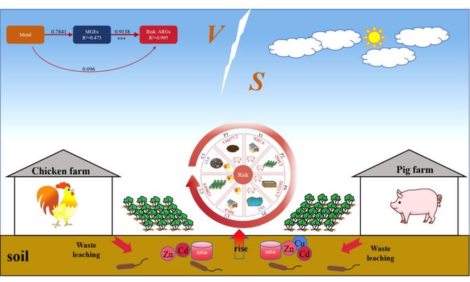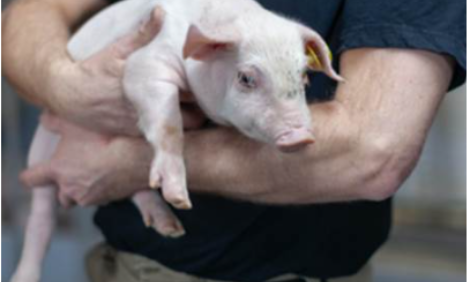



Assessment of Lameness, Productivity and Longevity in Group and Individually Housed Gestating Sows
In the 2011 Annual Report from the Prairie Swine Centre, L. Lang and co-authors from several Canadian organisations conclude that lameness is one of the most important welfare issues in sows.

Summary
The movement away from sow gestation stalls to group housing
presents several major challenges in terms of facility design and
sow management. Lameness is one of the most important welfare
issues in sows, and factors affecting lameness and sow longevity
are expected to change in group housing systems. Therefore, there
is a need for objective, quantitative methods to assess lameness in
pigs.
This study uses several different methods of lameness detection
including complex gait scoring, kinematics, accelerometers,
and a force plate weigh scale. The use of these technologies in sows
could lead to better early detection, quantification and understanding
of sow lameness and advance our understanding of the relationship
between housing, social factors, and sow lameness. Other
measures studied include temperament testing and production
measures.
This is a two-year study that will be concluded in 2012, with
the objective of determining relationships among variables including
body weight, age, social rank, body condition, health status
and degree of lameness. Group and stall housed systems will also
be compared, based on relative productivity, culling rate, health
changes, aggression and injuries. Once the relative importance of
these factors is identified, the data will be used to refine a
longevity model for group housed sows, and will provide
information on factors that can be expected to influence
lameness and longevity in group housed systems.
Introduction
The movement away from sow gestation stalls to group
housing presents several major welfare issues from the
standpoint of facility design and sow management. In
choosing the type of gestation housing to implement, it
will be important to adopt systems that provide the greatest
advantage in terms of their impact on sow welfare
and longevity in the herd, as well as their impact on economic
sustainability.
Lameness in sows is one of the most important welfare issues. Studies in Europe and North America have
shown that lameness is the second major cause of culling after reproductive
failure and represents between eight and 15 per cent of total culled
sows (Friendship et al. 1986; D’Allaire et al. 1987; Boyle et al. 1998;
Anil et al. 2005). Lameness also accounts for up to 25 per cent of culling
reasons in gilts (Tiranti & Morrison 2006; Tarres et al. 2006) and is
an important criterion in gilt selection (Jorgensen 2000).
Until now,
qualitative visual scores of gait, standing posture or difficulty in lying down have been the main methods used to measure lameness
in pigs (Boyle et al. 2000; Bonde et al. 2004; Anil et al. 2005; Scott et
al. 2006; Harris et al. 2006). However, accuracy of these qualitative
methods can vary significantly among observers (Main et al. 2000).
Therefore, there is a need for more objective quantitative methods
to assess lameness in pigs.
Several quantitative methods for assessing
gait, such as kinematics and accelerometers, have been studied
in dairy cattle and have recently been under investigation for use
in sows. The use of these technologies in sows could lead to better
early detection, quantification and understanding of sow lameness,
and advance understanding of the relationship between housing,
social factors, and lameness.

The objective of this study is to determine the relationship among
variables such as body weight, age, social rank, body condition and
health status, and degree of lameness on success within the different
systems based on relative productivity, culling rate, health
changes, aggression and injuries.
Once the relative importance of these variables has been evaluated, the information will be used to
complement a group housed sow longevity model. The model will
be subsequently validated and refined using data collected from
each study site. The aim will be to develop a reliable model that can
be used by producers to predict the economic outcome of different
management practices related to longevity.


Experimental Procedure
Data collection is currently underway, and due to be completed in July 2012. The protocols developed in Phase I are being implemented at four research stations across the country, including the Prairie Swine Centre, University of Manitoba, University of Guelph and AAFC Sherbrooke. The use of four sites is of importance as it provides data on a variety of management and housing systems. Data from each site will be incorporated into the evaluation and validation of the sow longevity/profitability model.
Assessing lameness
Complex gait scoring
All sows are gait scored over 2 parities using a standardized qualitative
scale from 0 to 4 (simplified version of Main et al., 2000). Selected
sows then go on to be gait scored, and a more precise and
detailed description of the gait is obtained.
Kinematics
Each selected sow is video recorded as she walks along a corridor
lined with four-foot high Plexiglas panels to ensure transparency and visibility
of reflective markers by the camera. Fifteen reflective markers
are placed in standardized locations on the sow’s body (Figures 1 and 2)
in order to record her movement and speed. Recordings are being
analyzed for gait characteristics including stride length, stance
time, swing time, foot height, walking speed and angle variation of
carpal and tarsal joints and back.
Accelerometers
An accelerometer (Hobo® data logger, Figure 3) is placed on a rear leg
of each selected sow for recording of posture and for evaluation of stepping behaviour at feeding time. The Hobo® device is safely
protected inside a Velcro®-pocket and a Vet-Rap® covering. Data
on posture is collected by recording the acceleration on the x-axis
(at intervals of five seconds) over 24 hours. Data on stepping is collected
by recording the acceleration only on the x-axis, for one hour
at feeding time.

Force plate weigh scale
A weigh scale has been adapted for sows that uses four separate platforms
for measuring weight distribution on each limb (Figure 4). In
Phase 1, a validation study was completed to assess accuracy and
precision of the scale. Phase 2 aims to identify indicators of lameness
(e.g. un-balanced weight distribution, weight shifting) and
comparing measures obtained with the force plate to other lameness
detection methods, including kinematics, accelerometers and
visual scoring.

Temperament testing
Dominance and temperament traits are likely to affect the ability of sows to compete in group housing. Dominance is closely related to relative size, age and parity of animals in groups (Drickamer et al. 1999), while temperament is defined as relatively stable individual characteristics (Koolhaas et al. 1999). Two major dimensions of temperament have been identified in pigs. These traits can be described as ‘active-passive’ and ‘confident-fearful’ dimensions, and they are expected to affect the ability of sows to compete for social rank within group systems and also the level of aggression displayed. Sow temperament will be measured by 4 tests: the Open Door Test (ODT), Pig Approaching Human (PAH), Human Approaching Pig (HAP) and Novel Object Test (NOT). Figure 5 shows the octagonal pen used in the PAH, HAP and NOT.

Longevity study
Data is collected regarding sow condition and lameness at seven, 16 and 20 weeks post-breeding, and production data are collected from on-farm records at the end of maternity. Sow data includes gait score, parity, weight, body condition score and backfat. Production data includes breeding, farrowing and weaning dates, total piglets born, total piglets weaned, and sow feed intake, as well as medical records and culling information.
Conclusion
The need to monitor and assess animal welfare standards on
commercial farms is becoming an increasingly important issue
as quality assurance schemes are expanded in response to consumer
demands. Information from this project will provide tools
for the accurate assessment of lameness, which is an important
welfare measure that may be affected by changes to sow housing.
The findings should be of particular interest as many producers in
North America will be converting to group housed systems in the
near future.
The authors of this report were L. Lang1, N. Devillers2, L. Connor3, J. Brown1, H. Gonyou1, D. Beaulieu1, R. Friendship4, P. Luimes4, R. Bergeron4, S. Kontulainen5 and G. Johnson3
1 Prairie Swine Centre, Saskatoon, Saskatchewan
2 Agriculture and Agri-Food Canada, Lennoxville, Québec
3 University of Manitoba, Winnipeg, Manitoba
4 University of Guelph, Guelph, Ontario
5 University of Saskatchewan, Saskatoon, Saskatchewan
Acknowledgements
Strategic programme funding provided by Sask Pork, Alberta Pork,
Manitoba Pork Council, and the Saskatchewan Agricultural Development
Fund. Specific project funding was provided by the Canadian
Swine Research and Development Cluster (Swine Innovation
Porc).
June 2012








